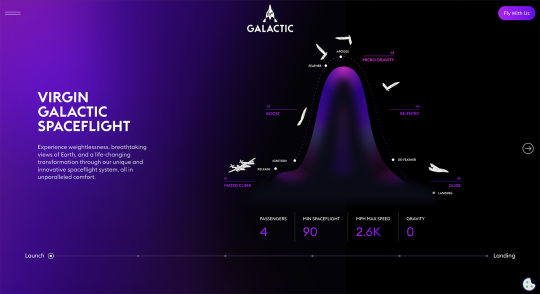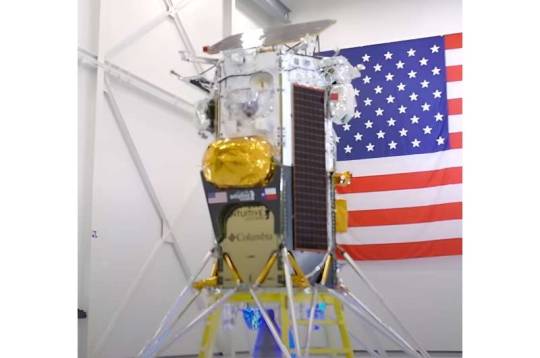#Quantum Computing Market Research
Text
#Quantum Computing Market#Quantum Computing Market Trends#Quantum Computing Market Growth.#Quantum Computing Market Research#Quantum Computing Market Industry
0 notes
Text
Gaming and Quantum Computing: The Future of Interactive Media
The game industry has always been at the forefront of technological advancement, and quantum computing is no different. It has the potential to revolutionize gaming enterprises and open up a wide range of opportunities for both game producers and players.
The government continues to invest more in quantum computing, cybercrime rates are increasing, and more sectors including chemicals, banking & finance, and defense are adopting the technology. Thus, such factors propel the market growth. In addition, according to a research report by Astute Analytica, the global quantum computing market is likely to grow at a compound annual growth rate (CAGR) of 30% over the projection period from 2023 to 2031.
How could realistic gaming experiences improve by quantum computing?
The immersive gaming experience may transform due to the development of quantum computing. It may make it possible for virtual worlds to grow in complexity, interactivity, and size by enabling quicker computation.
The capacity of quantum computers to process many pieces of data at once makes them far faster than conventional computers. As a result, game designers will be able to construct gaming universes that are bigger, more intricate, and feature people and settings that are more complex.
Developers would be able to construct immersive landscapes with more realistic physics and aesthetics due to quantum computing. for instance, It would make it possible for game designers to produce more lifelike weather, water effects, and fire.
It could allow game designers to offer more participatory gaming experiences in addition to better aesthetics. Developers could be able to create AI characters with more sophisticated learning skills due to quantum computers. This would make it possible for NPCs to engage with players in more interesting and lifelike ways.
What might be the next breakthrough in gaming and quantum computing?
The potential of future gaming experiences has been unlocked in recent years due to the growing interplay between gaming and quantum computing. This has given rise to the idea that quantum computing might be the next significant development in the gaming sector.
The game industry could be completely changed by quantum computing. Its processing capability is significantly higher than that of conventional computers, allowing for more intricate and immersive gaming experiences. In addition to simulating physical reality more precisely than conventional computers, it may also result in more lifelike visuals. Its processing capability is also far faster than regular computing, which could lead to speedier loading times.
Quantum computing can enhance game experiences while also enabling the creation of new gaming security measures. It could be utilized to develop more secure encryption methods for gaming networks since quantum computing is significantly more difficult to hack than conventional computing.
Although it is still in its infancy, quantum computing has the potential to completely transform the gaming industry. It might offer quicker loading times, more realistic graphics, and better security features. It is likely that as technology advances, it will play a major role in the gaming sector. It may therefore represent the next significant breakthrough in gaming.
Content Source: – Quantum Computing Market

#business#science#gaming#quantum computing#Quantum Computing Market#market research#market report#Astute Analytica#gaming experiences
0 notes
Link
“Quantum Computing Market” report provides a detailed analysis of global market size, regional and country-level market size, segmentation, market growth, market share, and competitive landscape.
0 notes
Text

New SpaceTime out Wednesday....
SpaceTime 20240214 Series 27 Episode 20
The discovery of a galaxy that shouldn’t exist
Astronomers using NASA’s Webb Space Telescope have discovered a dwarf galaxy that shouldn’t exist. The serendipitous observation reported in the Astrophysical Journal Letters is strange because it isn't interacting with a nearby galaxy and isn't forming new stars.


Virgin Galactic grounds space tourism flights
Virgin Galactic has grounded its space tourism operations after an alignment pin detached from its White Knight 2 mothership during the Galactic 06 mission.





The Odysseus lunar lander to launch today
NASA is targeting today for the launch of its next scientific mission to the moon. The Intuitive Machines' IM-1 mission will launch to the lunar South Polar region aboard a Falcon 9 rocket from the Cape Canaveral Space Force Station in Florida.


The cygnus cargo ship arrives at the space station
A Cygnus cargo ship carrying 3726 kilograms of equipment and supplies has successfully docked to the International Space Station.








The Science Report
Higher levels of air pollution and an increased risk of death linked to cardiovascular diseases.
The quest to fabricate the silicon chips of future quantum computers.
AI language models don’t always apply strict ethical codes when making decisions.
Alex on Tech vision pro is now out in the wild.
SpaceTime covers the latest news in astronomy & space sciences.
The show is available every Monday, Wednesday and Friday through Apple Podcasts (itunes), Stitcher, Google Podcast, Pocketcasts, SoundCloud, Bitez.com, YouTube, your favourite podcast download provider, and from www.spacetimewithstuartgary.com
SpaceTime is also broadcast through the National Science Foundation on Science Zone Radio and on both i-heart Radio and Tune-In Radio.
SpaceTime daily news blog: http://spacetimewithstuartgary.tumblr.com/
SpaceTime facebook: www.facebook.com/spacetimewithstuartgary
SpaceTime Instagram @spacetimewithstuartgary
SpaceTime twitter feed @stuartgary
SpaceTime YouTube: @SpaceTimewithStuartGary
SpaceTime -- A brief history
SpaceTime is Australia’s most popular and respected astronomy and space science news program – averaging over two million downloads every year. We’re also number five in the United States. The show reports on the latest stories and discoveries making news in astronomy, space flight, and science. SpaceTime features weekly interviews with leading Australian scientists about their research. The show began life in 1995 as ‘StarStuff’ on the Australian Broadcasting Corporation’s (ABC) NewsRadio network. Award winning investigative reporter Stuart Gary created the program during more than fifteen years as NewsRadio’s evening anchor and Science Editor. Gary’s always loved science. He studied astronomy at university and was invited to undertake a PHD in astrophysics, but instead focused on his career in journalism and radio broadcasting. He worked as an announcer and music DJ in commercial radio, before becoming a journalist and eventually joining ABC News and Current Affairs. Later, Gary became part of the team that set up ABC NewsRadio and was one of its first presenters. When asked to put his science background to use, Gary developed StarStuff which he wrote, produced and hosted, consistently achieving 9 per cent of the national Australian radio audience based on the ABC’s Nielsen ratings survey figures for the five major Australian metro markets: Sydney, Melbourne, Brisbane, Adelaide, and Perth. The StarStuff podcast was published on line by ABC Science -- achieving over 1.3 million downloads annually. However, after some 20 years, the show finally wrapped up in December 2015 following ABC funding cuts, and a redirection of available finances to increase sports and horse racing coverage. Rather than continue with the ABC, Gary resigned so that he could keep the show going independently. StarStuff was rebranded as “SpaceTime”, with the first episode being broadcast in February 2016. Over the years, SpaceTime has grown, more than doubling its former ABC audience numbers and expanding to include new segments such as the Science Report -- which provides a wrap of general science news, weekly skeptical science features, special reports looking at the latest computer and technology news, and Skywatch – which provides a monthly guide to the night skies. The show is published three times weekly (every Monday, Wednesday and Friday) and available from the United States National Science Foundation on Science Zone Radio, and through both i-heart Radio and Tune-In Radio.
#science#space#astronomy#physics#news#nasa#esa#astrophysics#spacetimewithstuartgary#starstuff#spacetime
12 notes
·
View notes
Text
The latest quantum computing news is funny as hell, and mirrors the fiasco with Google's claim a few years ago. They claimed to have done a calculation that would've taken 10K years on a conventional processor, then maybe a few months later a Chinese group proved it was doable in five minutes on silicon. IBM's recent claim has already been refuted, with a research group making a better accurate calculation in only several minutes.
I'm all for quantum optimism, but it is not the era-changer that their marketing makes it out to be. It's also not even useful for anything yet and given the immense cost it's kind of silly. I don't particularly care for investment grifts but I also don't like false information.
#we are still a long time off from commercial application of quantum computing#and we haven't even reached the peak of silicon technology either
4 notes
·
View notes
Text
Introduction to nascent AI usage
From 2024 to 2035, the world of technology and AI has progressed quickly, at rates like never seen before. In recent years, China has emerged as a powerhouse in the AI field, investing heavily in quantum computing and network research. These technologies have enhanced machine learning capabilities, driving breakthroughs in complex problem-solving and pattern recognition. By 2028, they had implemented AI-driven governance systems to optimise public services, decision-making and urban planning.
The United States has also made significant progress in AI ethics and regulations, establishing a comprehensive framework to govern the responsible use of AI in various sectors. Its comprehensive usage of AI has then allowed the United States to remain as one of the AI powerhouse. elaborate more on US like you did for China, what specific fields of AI have they helped in
The European Union led the way with integration of AI in financial markets, utilising advanced learning algorithms for real-time risk assessment and market predictions, allowing their market share to grow more quickly than ever before. By leveraging on AI technologies, the EU has experienced exponential economic growth, while remaining aware of the potential threats of AI usages.
Other countries have also quickly made transitions, integrating the usage of AI in their daily lives. Utilisation of AI in militarisation has been prevalent in this day and age, with Israel at the forefront of this technology. Due to the steadfast advancement in technology for AI, It is now more powerful, efficient and deadlier than ever before. There has also been a heavy integration of AI in daily lives to solve socio-economic problems by Japan, implementing AI-driven healthcare systems that revolutionised patient care and diagnostics.
Globally, countries have been encouraged to embrace AI in environmental conservation, through employing machine learning algorithms to monitor and combat deforestation in their country. As part of environmental efforts, there is now an availability of sustainable food sources with a reduction of unsustainable agriculture. This is achieved through clever farming that reduces diseases in livestocks which in turn increases the food supply. Countries have also been exploring more alternatives to renewable energy and methods of reducing carbon emissions. In these years, some of the most noticeable shifts in the way of life due to technological developments include the prevalence of self driving cars and electric vehicles with AI incorporated to prevent any accidents (up to 75% of the world uses it), and crime rates being drastically reduced due to surveillance systems throughout the whole city, reaching a all time low. People are now also able to engage in services such as anti-ageing technology and space travelling.
The world today has truly made remarkable advancements in the field of AI. Welcome to the future, where the rise of artificial intelligence is nothing short of an unstoppable force, destined to shape the destiny of humanity. Long live the technological revolution!
2 notes
·
View notes
Text
With a quantum “squeeze,” clocks could keep even more precise time, MIT researchers propose
More stable clocks could measure quantum phenomena, including the presence of dark matter.
Jennifer Chu | MIT News

The practice of keeping time hinges on stable oscillations. In a grandfather clock, the length of a second is marked by a single swing of the pendulum. In a digital watch, the vibrations of a quartz crystal mark much smaller fractions of time. And in atomic clocks, the world’s state-of-the-art timekeepers, the oscillations of a laser beam stimulate atoms to vibrate at 9.2 billion times per second. These smallest, most stable divisions of time set the timing for today’s satellite communications, GPS systems, and financial markets.
A clock’s stability depends on the noise in its environment. A slight wind can throw a pendulum’s swing out of sync. And heat can disrupt the oscillations of atoms in an atomic clock. Eliminating such environmental effects can improve a clock’s precision. But only by so much.
A new MIT study finds that even if all noise from the outside world is eliminated, the stability of clocks, laser beams, and other oscillators would still be vulnerable to quantum mechanical effects. The precision of oscillators would ultimately be limited by quantum noise.
But in theory, there’s a way to push past this quantum limit. In their study, the researchers also show that by manipulating, or “squeezing,” the states that contribute to quantum noise, the stability of an oscillator could be improved, even past its quantum limit.
“What we’ve shown is, there’s actually a limit to how stable oscillators like lasers and clocks can be, that’s set not just by their environment, but by the fact that quantum mechanics forces them to shake around a little bit,” says Vivishek Sudhir, assistant professor of mechanical engineering at MIT. “Then, we’ve shown that there are ways you can even get around this quantum mechanical shaking. But you have to be more clever than just isolating the thing from its environment. You have to play with the quantum states themselves.”
The team is working on an experimental test of their theory. If they can demonstrate that they can manipulate the quantum states in an oscillating system, the researchers envision that clocks, lasers, and other oscillators could be tuned to super-quantum precision. These systems could then be used to track infinitesimally small differences in time, such as the fluctuations of a single qubit in a quantum computer or the presence of a dark matter particle flitting between detectors.
“We plan to demonstrate several instances of lasers with quantum-enhanced timekeeping ability over the next several years,” says Hudson Loughlin, a graduate student in MIT’s Department of Physics. “We hope that our recent theoretical developments and upcoming experiments will advance our fundamental ability to keep time accurately, and enable new revolutionary technologies.”
Loughlin and Sudhir detail their work in an open-access paper published in the journal Nature Communications.
Keep reading.
Make sure to follow us on Tumblr!
4 notes
·
View notes
Text
🔊Get Research Study on AI Chip Market
On September 4th, we announced our research study AI chip refers to a specialized integrated circuit tailored for efficient and fast execution of AI tasks. These chips are purposefully crafted to expedite intricate algorithmic calculations, crucial for various AI applications. They harness parallel processing abilities, unique neural network architectures, and optimized memory structures to achieve remarkable performance improvements compared to general-purpose processors.
How did the AI 'IMPACTING“ Semiconductor Industry ?
The artificial intelligence chip market size is segmented into Chip Type, Processing Type, Technology, Application and Industry Vertical.
Who are the Top Contributing Corporations?
Major Key Players:
MediaTek Inc,
Qualcomm Technologies Inc.,
Advanced Micro Devices Inc.(Xilinx Inc.),
Alphabet Inc.,
Intel Corporation,
NVIDIA Corporation (Mellanox Technologies),
Samsung Electronics Co Ltd,
Baidu,
SoftBank Corp.
According to the insights of the CXOs of Leading Companies
Simply Click here or email us at [email protected] with the following for more information:
Increased demand for artificial intelligence chips
AI chip market is seen as promising for the technological industry's future
Investments in AI start-ups and the development of quantum computers
Today and Be a Vital Part of Our Thriving Community!
Great! Follow the steps below:
Reblog this post
Share this information with a friend
Follow @amrresearchstudy for more information.
#TechMarket#AIStartups#AIResearch#TechInvestment#FutureTech#ChipDesign#TechTrends#InnovationHub#SmartTechnology#AIIndustry#ArtificialIntelligence#AIHardware#Semiconductor#AIChips
4 notes
·
View notes
Note
What's your opinion on condensed matter physics? 😊
they're neat! i think there's a lot of misunderstanding in public outreach about it, because they behave in many ways counterintuitively to our everyday experience of matter
the field allows us to understand the dynamics of extreme states, like neutron stars or the quark-gluon plasma phase of the universe. i don't know what direct applicability it has beyond pure research, but honestly that's a point in its favor for me. we don't need superconducting microchips, we need it to show us the constraints for a route to a better physical theory
that said, i know semiconductors and lasers are technologies arising from condensed matter research, and lasers form the basis of interferometry (which is more like my field, if i had one) -- but lasers arose out of research for research's sake, the thing was not the end goal. i was just saying this to my roommate but i think the goal-oriented focus on technological applicability is a misstep of the US empire. we may be missing a lot of novel phenomena by providing funding to development of some marketable or weaponizable application instead of purely researching the underlying physics for their own sake
this is why there's so much obsession in the news over quantum computing, the blockchain, and machine learning, they are the technological applicability goal itself, in absence of a thorough, robust theory of the mechanics (condmat, encryption, and stats, respectively). same goes for fusion reactors in absence of a complete theory of plasma physics, or particle colliders in absence of a complete theory of magnetism, honestly. to some degree these things are built to probe the theory, but i think we've got it backwards, where it's necessary to sell the concept of the applicability of the thing before you can get it built to probe any theory, in a way that would not be such an obstacle without the capitalist prerequisite of marketability or the military prerequisite of weaponizability
5 notes
·
View notes
Text
What are the top 10 AI companies all over the world?
Identifying the top 10 AI companies worldwide is a challenging task due to the rapidly evolving nature of the industry and the multitude of companies operating in the field. However, based on various factors such as revenue, market share, innovation, and impact, the following companies are often recognized as leaders in the global AI landscape and Cryptocurrency Prices and News
Google (Alphabet Inc.): Google is widely regarded as one of the leading AI companies globally, leveraging AI technologies across its products and services, including search, advertising, cloud computing, and autonomous vehicles. Google's AI initiatives span machine learning, natural language processing, computer vision, and robotics, with projects like Google Brain, DeepMind, and TensorFlow contributing to advancements in the field.
Amazon: Amazon is a dominant force in the AI space, leveraging AI and machine learning to enhance its e-commerce platform, logistics operations, cloud computing services (Amazon Web Services), and smart home devices (Amazon Echo, Alexa). Amazon's AI capabilities include recommendation systems, voice recognition, and predictive analytics, driving personalized customer experiences and operational efficiencies.
Microsoft: Microsoft is a key player in the AI industry, integrating AI technologies into its software products, cloud services (Azure), and enterprise solutions. Microsoft's AI initiatives encompass areas such as natural language processing, computer vision, conversational AI (Microsoft Bot Framework), and reinforcement learning. Projects like Azure AI and Microsoft Research contribute to innovation and thought leadership in AI.
IBM: IBM has a long-standing presence in the AI field, with initiatives spanning cognitive computing, natural language understanding, and machine learning. IBM's AI offerings include the Watson platform, which provides AI-powered solutions for industries such as healthcare, finance, and retail. IBM Research drives innovation in AI, exploring emerging technologies like quantum computing and neuromorphic computing.
Facebook: Facebook is a major player in the AI space, leveraging AI technologies to enhance user experience, content moderation, advertising targeting, and virtual reality (Oculus). Facebook's AI initiatives include projects like DeepFace for facial recognition, PyTorch for deep learning research, and FAIR (Facebook AI Research) for advancing the state of the art in AI.
Apple: Apple is known for integrating AI technologies into its hardware products (iPhone, iPad, Mac) and software ecosystem (iOS, macOS, Siri). Apple's AI initiatives encompass areas such as natural language processing, computer vision, and augmented reality. Projects like Core ML enable developers to integrate machine learning models into iOS apps, while Siri serves as Apple's virtual assistant powered by AI.
NVIDIA: NVIDIA is a key player in the AI industry, known for its graphics processing units (GPUs) that are widely used for accelerating AI and deep learning workloads. NVIDIA's AI initiatives include hardware platforms like the NVIDIA Tesla GPU accelerators and software frameworks like CUDA and cuDNN. NVIDIA's GPUs are used in data centers, autonomous vehicles, robotics, and edge devices for AI inference and training.
OpenAI: OpenAI is a research organization focused on advancing artificial intelligence in a safe and beneficial manner. Founded by Elon Musk and others, OpenAI conducts cutting-edge research in areas such as reinforcement learning, unsupervised learning, and AI ethics. OpenAI's projects include GPT (Generative Pre-trained Transformer) models for natural language processing and reinforcement learning agents like OpenAI Gym.
DeepMind (acquired by Google): DeepMind is a London-based AI research lab acquired by Google in 2014. DeepMind is known for its breakthroughs in reinforcement learning and artificial general intelligence (AGI). Projects like AlphaGo, AlphaZero, and AlphaFold have demonstrated DeepMind's prowess in areas such as game playing, optimization, and protein folding prediction.
Salesforce: Salesforce is a leading provider of customer relationship management (CRM) software, leveraging AI technologies to enhance sales, marketing, and customer service operations. Salesforce's AI initiatives include Einstein AI, which provides AI-powered insights and recommendations to sales and marketing teams, as well as Salesforce Research, which explores emerging trends and technologies in AI and Stock Prices and News
These companies represent a diverse range of industries and sectors, each leveraging AI technologies to drive innovation, enhance productivity, and deliver value to customers. While these companies are often recognized as leaders in the AI space, it's important to note that the landscape is constantly evolving, with new players emerging and existing players expanding their AI capabilities.
Read More Blogs:
Top 10 AI Companies All Over the World!
Top 10 Companies to Hire Remote Tech Roles in the US, 2024
Upgraded Network Protection with Raspberry Pi, 2024
#AIcompanies #Technology
0 notes
Text
do google wireless routers use vpn proxy
🔒🌍✨ Get 3 Months FREE VPN - Secure & Private Internet Access Worldwide! Click Here ✨🌍🔒
do google wireless routers use vpn proxy
Google
Title: Unveiling the Power of Google: A Comprehensive Overview
Google, the tech giant synonymous with internet search, has become an integral part of our daily lives, revolutionizing how we access information and connect with the world. Founded in 1998 by Larry Page and Sergey Brin, Google started as a research project at Stanford University, quickly evolving into the globally recognized corporation it is today.
At its core, Google's mission is to organize the world's information and make it universally accessible and useful. Its search engine, powered by complex algorithms and artificial intelligence, sifts through billions of web pages to deliver relevant and personalized results in milliseconds. From answering trivia questions to finding solutions to complex problems, Google Search has become the go-to resource for knowledge-seekers worldwide.
Beyond search, Google offers a diverse ecosystem of products and services. Gmail revolutionized email communication, while Google Maps redefined navigation with its detailed maps and real-time traffic updates. Google Drive provides cloud storage for seamless access to files across devices, and YouTube has transformed the way we consume and share video content.
In addition to consumer-facing products, Google has made significant strides in the realm of artificial intelligence and machine learning. Google Assistant, its virtual voice-activated assistant, can perform tasks, answer questions, and control smart home devices with natural language commands. Meanwhile, Google's DeepMind subsidiary pushes the boundaries of AI research with groundbreaking projects in healthcare, gaming, and more.
Despite its widespread success, Google has faced scrutiny over privacy concerns and antitrust issues. Critics argue that its dominance in online advertising and search gives it too much control over digital markets. Nevertheless, Google continues to innovate and expand its reach, with initiatives in renewable energy, autonomous vehicles, and quantum computing.
In conclusion, Google's impact on the digital landscape cannot be overstated. From simplifying everyday tasks to advancing the frontiers of technology, Google remains at the forefront of innovation, shaping the way we interact with information and each other in the digital age.
Wireless routers
Wireless routers have revolutionized the way we access the internet and connect multiple devices in our homes or offices without the hassle of cables. These devices serve as the gateway between our devices and the internet, allowing us to browse, stream, download, and communicate wirelessly.
One of the key advantages of wireless routers is the convenience they offer. Users can connect their smartphones, laptops, smart TVs, and other devices to the router without the need for physical cables, providing greater flexibility and mobility. This convenience is especially valuable in today's fast-paced world where staying connected on-the-go is essential.
Wireless routers also offer improved flexibility in terms of device placement. Unlike wired connections that require devices to be physically connected to the router, wireless connections allow for greater freedom in placing devices around the home or office. This flexibility can help eliminate dead zones and ensure a strong and stable connection throughout the space.
In addition to convenience and flexibility, wireless routers also provide enhanced security features to protect users' data and privacy. Most modern routers come equipped with advanced security protocols and encryption standards to safeguard against unauthorized access and cyber threats, offering users peace of mind when browsing online.
Overall, wireless routers have become an indispensable part of our connected lives, providing convenience, flexibility, and security for our internet-enabled devices. As technology continues to evolve, wireless routers will likely continue to play a crucial role in keeping us connected in a wireless world.
VPN
A Virtual Private Network (VPN) is a powerful tool that enhances your online security and privacy by creating a secure and encrypted connection to another network over the Internet. VPNs have become increasingly popular due to the growing concerns about online privacy and security.
One of the key benefits of using a VPN is the ability to browse the internet anonymously. By routing your internet traffic through a secure server, VPNs hide your IP address and encrypt your online activities, making it difficult for hackers, advertisers, or government agencies to track your online behavior.
Moreover, VPNs are essential for accessing geographically restricted content. By connecting to a server in a different location, you can bypass censorship and access online content that may be blocked in your region. This is particularly useful for streaming services, social media platforms, and news websites.
In addition to enhancing your privacy and bypassing geo-restrictions, VPNs also provide an extra layer of security when using public Wi-Fi networks. Public Wi-Fi networks are notorious for their lack of security, making it easy for hackers to intercept your data. By using a VPN, all your internet traffic is encrypted, protecting your sensitive information from potential cyber attacks.
In conclusion, VPNs are valuable tools for anyone looking to safeguard their online privacy, access geographically restricted content, and secure their internet connection. With cyber threats on the rise, investing in a reliable VPN service is a proactive step towards ensuring a safer and more private online experience.
Proxy
Understanding Proxies: Enhancing Online Security and Privacy
In the realm of cyberspace, where anonymity and privacy are increasingly valued commodities, proxies emerge as essential tools for safeguarding personal data and ensuring online security. A proxy acts as an intermediary between a user and the internet, serving as a gateway through which internet traffic flows. This mechanism enables users to conceal their IP addresses and encrypt their online activities, thereby shielding sensitive information from prying eyes.
One of the primary functions of proxies is to enhance privacy by masking the user's IP address. By routing internet requests through a proxy server, users can obscure their digital footprint and prevent websites, advertisers, and other third parties from tracking their online behavior. This anonymity fosters a safer browsing experience, reducing the risk of identity theft, data breaches, and intrusive surveillance.
Moreover, proxies facilitate access to geo-restricted content by spoofing the user's location. By connecting to a proxy server in a different geographic region, users can bypass censorship measures and unlock content that is otherwise unavailable in their location. This capability is particularly valuable for individuals seeking unrestricted access to streaming services, social media platforms, and other online resources.
In addition to enhancing privacy and circumventing geographic restrictions, proxies serve various purposes in cybersecurity and digital marketing. Businesses utilize proxies to conduct market research, monitor competitors, and verify advertising campaigns' effectiveness. Cybersecurity professionals employ proxies to analyze network traffic, detect potential threats, and implement defensive measures against cyberattacks.
Despite their myriad benefits, proxies are not without limitations and risks. Users must exercise caution when selecting proxy providers, as malicious actors may operate proxies to intercept sensitive information or distribute malware. Moreover, reliance on proxies may introduce latency and slow down internet connection speeds, particularly if the proxy server is located far from the user's geographical location.
In conclusion, proxies play a pivotal role in safeguarding online security and privacy, offering users a versatile toolset for concealing their identities, accessing restricted content, and mitigating cybersecurity risks. However, users must remain vigilant and discerning to maximize the benefits of proxies while minimizing potential drawbacks.
Usage
Usage refers to the way in which something is used or employed. It plays a vital role in determining the effectiveness and functionality of various products and services in our day-to-day lives.
In the realm of technology, the usage of software and applications is crucial for accomplishing tasks efficiently. Whether it's navigating a smartphone, browsing the internet, or using productivity tools, understanding the usage of such technology enhances our digital experience.
In the context of language, the usage of words and phrases impacts the clarity and communication of our messages. By employing proper grammar and vocabulary, we can effectively convey our thoughts and ideas to others.
Furthermore, in the world of commerce, the usage of marketing strategies and techniques can influence consumer behavior and purchasing decisions. Understanding consumer usage patterns and preferences enables businesses to tailor their products and services to meet the needs of their target audience.
Overall, usage permeates multiple aspects of our lives, influencing the way we interact with technology, communicate with others, and engage in economic exchanges. By recognizing the significance of usage in various domains, we can optimize our experiences and achieve our goals more effectively.
0 notes
Text
NVIDIA Energies Meta’s HyperLlama 3: Faster AI for All

Today, NVIDIA revealed platform-wide optimisations aimed at speeding up Meta Llama 3, the most recent iteration of the large language model (LLM).
When paired with NVIDIA accelerated computing, the open approach empowers developers, researchers, and companies to responsibly innovate across a broad range of applications.
Educated using NVIDIA AI
Using a computer cluster with 24,576 NVIDIA H100 Tensor Core GPUs connected by an NVIDIA Quantum-2 InfiniBand network, meta engineers trained Llama 3. Meta fine-tuned its network, software, and model designs for its flagship LLM with assistance from NVIDIA.
In an effort to push the boundaries of generative AI even farther, Meta recently revealed its intentions to expand its infrastructure to 350,000 H100 GPUs.
Aims Meta for Llama 3
Meta’s goal with Llama 3 was to create the greatest open models that could compete with the finest proprietary models on the market right now. In order to make Llama 3 more beneficial overall, Meta sought to address developer comments. They are doing this while keeping up their leadership position in the responsible use and deployment of LLMs.
In order to give the community access to these models while they are still under development, they are adopting the open source philosophy of publishing frequently and early. The Llama 3 model collection begins with the text-based models that are being released today. In the near future, the meta objective is to extend the context, enable multilingual and multimodal Llama 3, and keep enhancing overall performance in key LLM functions like coding and reasoning.
Exemplar Architecture
For Llama 3, they went with a somewhat conventional decoder-only transformer architecture in keeping with the Meta design concept. They improved upon Llama 2 in a number of significant ways. With a vocabulary of 128K tokens, Llama 3’s tokenizer encodes language far more effectively, significantly enhancing model performance. In order to enhance the inference performance of Llama 3 models, grouped query attention (GQA) has been implemented for both the 8B and 70B sizes. They used a mask to make sure self-attention does not transcend document borders when training the models on sequences of 8,192 tokens.
Training Information
Curating a sizable, excellent training dataset is essential to developing the best language model. They made a significant investment in pretraining data, adhering to the principles of Meta design. More than 15 trillion tokens, all gathered from publically accessible sources, are used to pretrained Llama 3. The meta training dataset has four times more code and is seven times larger than the one used for Llama 2. More over 5 percent of the Llama 3 pretraining dataset is composed of high-quality non-English data covering more than 30 languages, in anticipation of future multilingual use cases. They do not, however, anticipate the same calibre of performance in these languages as they do in English.
They created a number of data-filtering procedures to guarantee that Llama 3 is trained on the best possible data. To anticipate data quality, these pipelines use text classifiers, NSFW filters, heuristic filters, and semantic deduplication techniques. They discovered that earlier iterations of Llama are remarkably adept at spotting high-quality data, so they trained the text-quality classifiers that underpin Llama 3 using data from Llama 2.
In-depth tests were also conducted to determine the optimal methods for combining data from various sources in the Meta final pretraining dataset. Through these tests, we were able to determine the right combination of data that will guarantee Llama 3’s performance in a variety of use scenarios, such as trivia, STEM, coding, historical knowledge, etc.
Next for Llama 3: What?
The first models they intend to produce for Llama 3 are the 8B and 70B variants. And there will be a great deal more.
The meta team is thrilled with how these models are trending, even though the largest models have over 400B parameters and are still in the training phase. They plan to release several models with more features in the upcoming months, such as multimodality, multilingual communication, extended context windows, and enhanced overall capabilities. When they have finished training Llama 3, they will also release an extensive research article.
They thought they could offer some pictures of how the Meta biggest LLM model is trending to give you an idea of where these models are at this point in their training. Please be aware that the models released today do not have these capabilities, and that the data is based on an early checkpoint of Llama 3 that is still undergoing training.
Utilising Llama 3 for Tasks
Versions of Llama 3, optimised for NVIDIA GPUs, are currently accessible for cloud, data centre, edge, and PC applications.
Developers can test it via a browser at ai.nvidia.com. It comes deployed as an NVIDIA NIM microservice that can be used anywhere and has a standard application programming interface.
Using NVIDIA NeMo, an open-source LLM framework that is a component of the safe and supported NVIDIA AI Enterprise platform, businesses may fine-tune Llama 3 based on their data. NVIDIA TensorRT-LLM can be used to optimise custom models for inference, and NVIDIA Triton Inference Server can be used to deploy them.
Bringing Llama 3 to Computers and Devices
Moreover, it utilizes NVIDIA Jetson Orin for edge computing and robotics applications, generating interactive agents similar to those seen in the Jetson AI Lab.
Furthermore, workstation and PC GPUs from NVIDIA and GeForce RTX accelerate Llama 3 inference. Developers can aim for over 100 million NVIDIA-accelerated systems globally using these systems.
Llama 3 Offers Optimal Performance
The best techniques for implementing a chatbot’s LLM balance low latency, fast reading speed, and economical GPU utilisation.
Tokens, or roughly the equivalent of words, must be delivered to an LLM by such a service at a rate of around double the user’s reading speed, or 10 tokens per second.
Using these measurements, an initial test using the version of Llama 3 with 70 billion parameters showed that a single NVIDIA H200 Tensor Core GPU generated roughly 3,000 tokens/second, adequate to serve about 300 simultaneous users.
Thus, by serving over 2,400 users concurrently, a single NVIDIA HGX server equipped with eight H200 GPUs may deliver 24,000 tokens/second and further optimise expenses.
With eight billion parameters, the Llama 3 version for edge devices produced up to 40 tokens/second on the Jetson AGX Orin and 15 tokens/second on the Jetson Orin Nano.
Progression of Community Models
As a frequent contributor to open-source software, NVIDIA is dedicated to enhancing community software that supports users in overcoming the most difficult obstacles. Additionally, open-source models encourage AI openness and enable widespread user sharing of research on AI resilience and safety.
Read more on Govindhtech.com
0 notes
Text
Unlocking the Potential of the Quantum Financial System
Unlocking the potential of the Quantum Financial System (QFS) involves harnessing its innovative features to address challenges and unlock new opportunities in the financial industry. Here's how we can unlock the potential of the QFS:
Enhanced Security: Leverage quantum encryption techniques to enhance the security of financial transactions and data storage. Quantum-resistant encryption algorithms can protect sensitive financial information from cyber threats and ensure the integrity of transactions, building trust and confidence in the financial system.
Real-Time Transactions: Exploit the speed of quantum computing to enable near-instantaneous transaction processing. Real-time transactions reduce settlement times, minimize counterparty risk, and increase liquidity in financial markets, improving efficiency and scalability.
Decentralized Infrastructure: Embrace the decentralized nature of the QFS to promote financial inclusion and accessibility. Decentralized financial services and applications can provide equal access to financial resources, empower underserved populations, and foster innovation in emerging markets.
Transparent and Immutable Ledger: Utilize blockchain technology to create a transparent and immutable ledger of financial transactions. The transparent nature of the blockchain ensures accountability and trust, while immutability prevents tampering or fraud, enhancing transparency and integrity in financial transactions.
Smart Contracts and Automation: Implement smart contracts to automate and streamline financial processes. Smart contracts can facilitate complex transactions, enforce agreements, and reduce the need for intermediaries, lowering costs and mitigating the risk of errors or disputes.
Scalability and Efficiency: Leverage the scalability of quantum computing and blockchain technology to handle large volumes of transactions efficiently. Scalable infrastructure can support the growing demands of the financial industry, accommodate increasing transaction volumes, and adapt to changing market conditions.
Regulatory Compliance and Standards: Establish regulatory frameworks and industry standards to govern the implementation and operation of the QFS. Regulatory compliance ensures consumer protection, data privacy, and market integrity, fostering trust and stability in the financial ecosystem.
Collaboration and Innovation: Foster collaboration between industry stakeholders, researchers, and policymakers to drive innovation and adoption of the QFS. Collaborative efforts can accelerate technological advancements, address regulatory challenges, and unlock the full potential of the QFS to transform the financial industry.
By unlocking the potential of the quantum financial system, we can create a more secure, efficient, and inclusive financial ecosystem that benefits individuals, businesses, and economies worldwide. Embracing the innovative features of the QFS and fostering collaboration will be key to realizing its transformative impact on the future of finance.
1 note
·
View note
Text

New SpaceTime out Friday....
SpaceTime 20231201 Series 26 Episode 144
Explaining why galaxies hang out with their own kind
A new study may have solved one of the most perplexing mysteries in astronomy -- why galaxies in our neighbourhood hang out with their own kind.





NASA’s Cold Atom Lab Sets Stage for Quantum Chemistry in Space
For the first time in space, scientists have produced a quantum gas containing two types of atoms.




North Korea launches a new spy satellite
North Korea claims its successfully launched a new spy satellite.

The Science Report
Dust storms are increasing dramatically in frequency in Australia.
Study claims the impact of screens on children and show a mix of small risks and benefits.
Footprints discovered in Victoria show the amazing diversity of Australia's early bird population.
Skeptics guide to the House Oversight Committee on UFOs
SpaceTime covers the latest news in astronomy & space sciences.
The show is available every Monday, Wednesday and Friday through Apple Podcasts (itunes), Stitcher, Google Podcast, Pocketcasts, SoundCloud, Bitez.com, YouTube, your favourite podcast download provider, and from www.spacetimewithstuartgary.com
SpaceTime is also broadcast through the National Science Foundation on Science Zone Radio and on both i-heart Radio and Tune-In Radio.
SpaceTime daily news blog: http://spacetimewithstuartgary.tumblr.com/
SpaceTime facebook: www.facebook.com/spacetimewithstuartgary
SpaceTime Instagram @spacetimewithstuartgary
SpaceTime twitter feed @stuartgary
SpaceTime YouTube: @SpaceTimewithStuartGary
SpaceTime -- A brief history
SpaceTime is Australia’s most popular and respected astronomy and space science news program – averaging over two million downloads every year. We’re also number five in the United States. The show reports on the latest stories and discoveries making news in astronomy, space flight, and science. SpaceTime features weekly interviews with leading Australian scientists about their research. The show began life in 1995 as ‘StarStuff’ on the Australian Broadcasting Corporation’s (ABC) NewsRadio network. Award winning investigative reporter Stuart Gary created the program during more than fifteen years as NewsRadio’s evening anchor and Science Editor. Gary’s always loved science. He studied astronomy at university and was invited to undertake a PHD in astrophysics, but instead focused on his career in journalism and radio broadcasting. He worked as an announcer and music DJ in commercial radio, before becoming a journalist and eventually joining ABC News and Current Affairs. Later, Gary became part of the team that set up ABC NewsRadio and was one of its first presenters. When asked to put his science background to use, Gary developed StarStuff which he wrote, produced and hosted, consistently achieving 9 per cent of the national Australian radio audience based on the ABC’s Nielsen ratings survey figures for the five major Australian metro markets: Sydney, Melbourne, Brisbane, Adelaide, and Perth. The StarStuff podcast was published on line by ABC Science -- achieving over 1.3 million downloads annually. However, after some 20 years, the show finally wrapped up in December 2015 following ABC funding cuts, and a redirection of available finances to increase sports and horse racing coverage. Rather than continue with the ABC, Gary resigned so that he could keep the show going independently. StarStuff was rebranded as “SpaceTime”, with the first episode being broadcast in February 2016. Over the years, SpaceTime has grown, more than doubling its former ABC audience numbers and expanding to include new segments such as the Science Report -- which provides a wrap of general science news, weekly skeptical science features, special reports looking at the latest computer and technology news, and Skywatch – which provides a monthly guide to the night skies. The show is published three times weekly (every Monday, Wednesday and Friday) and available from the United States National Science Foundation on Science Zone Radio, and through both i-heart Radio and Tune-In Radio.
#science#space#astronomy#physics#news#nasa#esa#astrophysics#spacetimewithstuartgary#starstuff#spacetime
14 notes
·
View notes
Text
Quantum AI Success Stories: Real Users, Real Results
In a world buzzing with technological advancements, Quantum AI stands out as a beacon of futuristic promise. But is it all just hype, or are there genuine success stories out there? Let’s dive into the real-life impacts of Quantum AI, exploring how it's transforming industries and touching lives, with real users reaping real benefits.

Quantum AI: An Overview
Quantum AI combines the mystique of quantum computing with the practicality of artificial intelligence. Like a master chef blending the right ingredients, it promises to cook up solutions faster than ever before.
Breaking New Ground in Healthcare
In healthcare, Quantum AI is like a supercharged doctor, diagnosing diseases with precision and speed previously deemed impossible. Patients receive faster, more accurate treatment, saving lives and reducing healthcare costs.
Revolutionizing Financial Markets
In finance, Quantum AI acts as the ultimate advisor, analyzing market trends and managing risks with unparalleled accuracy. Traders and financial analysts are seeing their predictions turn into profitable realities.
Innovations in Energy and Sustainability
Quantum AI is paving the way for cleaner, more sustainable energy solutions, optimizing everything from power grid management to renewable energy sources.
Quantum AI in Transportation and Logistics
The logistics and transportation sector is experiencing a revolution, with Quantum AI optimizing routes, reducing fuel consumption, and improving overall efficiency.
Advancements in Science and Research
Researchers are harnessing the power of Quantum AI to make groundbreaking discoveries, from understanding the cosmos to unraveling the mysteries of life on Earth.
Quantum AI in Retail and Customer Service
Retail giants and small businesses alike are using Quantum AI to enhance customer experience, streamline operations, and boost sales through personalized recommendations and inventory management.
Challenges and Solutions in Quantum AI Adoption
Despite its potential, Quantum AI faces challenges like high costs and technical complexity. However, with the right strategies, businesses are overcoming these hurdles and reaping the benefits.
Comparing Before and After Quantum AI
The contrast is stark: tasks that once took days now take minutes, and predictions fraught with uncertainty are now made with confidence, all thanks to Quantum AI.
Testimonials: What Users Are Saying About Quantum AI
Hear firsthand from those who’ve experienced the Quantum AI transformation. Their stories are a testament to its impact across various sectors.
Quantum AI's Role in Education and Training
Educational institutions are beginning to integrate Quantum AI into their curriculums, preparing the next generation of workers for a future dominated by this technology.
The Future: Where Quantum AI is Headed Next
The possibilities are as vast as the universe itself. With continuous advancements, Quantum AI is set to redefine our world in ways we can only begin to imagine.
Quantum AI in the Public Sector
Government agencies are starting to leverage Quantum AI for everything from urban planning to national security, leading to more efficient and effective public services.
Conclusion: The Transformative Power of Quantum AI
Quantum AI is more than just a technological trend; it's a revolution that’s reshaping industries and improving lives. With each success story, we glimpse a future where Quantum AI is at the heart of innovation, driving progress and prosperity.
Through these explorations, it’s clear that Quantum AI is not just a fleeting fad but a robust tool yielding tangible benefits across the globe. Its journey is just beginning, and the horizon is bright with potential. As we continue to witness its transformative power, the excitement for what’s next is palpable. Quantum AI is not merely changing the game; it's redefining the playing field, bringing us into a new era of technological achievement.
0 notes
Text
UKAEA Enhances Optical Viewport Tech

The UKAEA, with Project Solace and UK Government support, has advanced optical viewport technology, slashing optical distortion by 75%. This leap boosts fusion and quantum physics research, with the potential to transform aerospace, beam-line science, and laser applications.
By harnessing feedback from the frontlines of quantum physics and employing new modeling tools, the project has ushered in an era of custom-engineered viewports, tailored to the intricate demands of modern science.
Revolutionizing Optical Clarity
At the heart of this innovation lies the drive to minimize optical distortion, a persistent challenge in capturing the minutiae of quantum phenomena and the fiery dance of fusion reactions.
Moreover, the advent of ultra-low distortion viewports marks a paradigm shift, offering scientists a clearer window into the subatomic realm and the tempestuous conditions within fusion reactors.
Bridging Worlds: From Fusion to Quantum and Beyond
The Special Techniques Group
UKAEA's quest is not confined to the laboratory. In fact, the challenges of fusion energy - from the handling of exotic materials to withstanding severe temperatures and pressures - mirror those encountered across various sectors.
Additionally, the Special Techniques Group’s prowess in diffusion bonding and precision assembly of optical materials has found applications far beyond fusion.
These advancements are benefiting not only aerospace but also beam-line science and high-power laser applications, underscoring the widespread impact of UKAEA's research and development efforts.
Applications and Collaborations
Project Solace's ripple effect extends to the next generation of quantum computers and sensors, promising enhancements in aerospace technology and beyond. Furthermore, collaborations with Frazer Nash Consultancy and Atkins highlight the cross-pollination of ideas.
Moreover, Bayesian optimization techniques are fine-tuning viewport designs for a global market, illustrating the depth of innovation and collaboration driving progress in this field.
A Vision Shared
A Beacon of British Innovation
The narrative of Project Solace is a testament to the UK's commitment to nurturing innovation, with the Knowledge Asset Grant Fund playing a pivotal role.
As Alison Campbell of the GOTT remarked, the project not only advances UKAEA's technological capabilities but also underscores the value of leveraging government expertise and knowledge assets in pushing the boundaries of science and technology.
Commenting on the funding she said:
“I’m delighted that the Knowledge Asset Grant Fund has been able to support UKAEA to expand the application of its unique technology, delivering value to its customers.
The fund, and our work in GOTT, is focussed on helping organisations across government, such as UKAEA, realise the value and impact from exploiting their expertise and Knowledge Assets. We look forward to continuing to support the project as it develops.”
Charting the Course for Tomorrow
As we stand on the brink of a new era in scientific exploration, UKAEA's breakthroughs in optical viewport technology herald a future where the mysteries of the universe become ever more accessible.
Moreover, with an eye on the horizon, the UK continues to blaze a trail in the quest for knowledge, driven by a relentless spirit of inquiry and the pursuit of a better, more enlightened world.
Sources: THX News & UK Atomic Energy Authority.
Read the full article
#Bayesianoptimisationtechniques#Customopticalviewports#Fusionenergyresearch#Opticalclarityinviewports#Opticaldistortionreduction#Opticalviewportdesigns#Precisionassemblyopticalmaterials#ProjectSolaceUKAEA#Quantumphysicsapplications#Ultra-lowdistortionviewports
0 notes